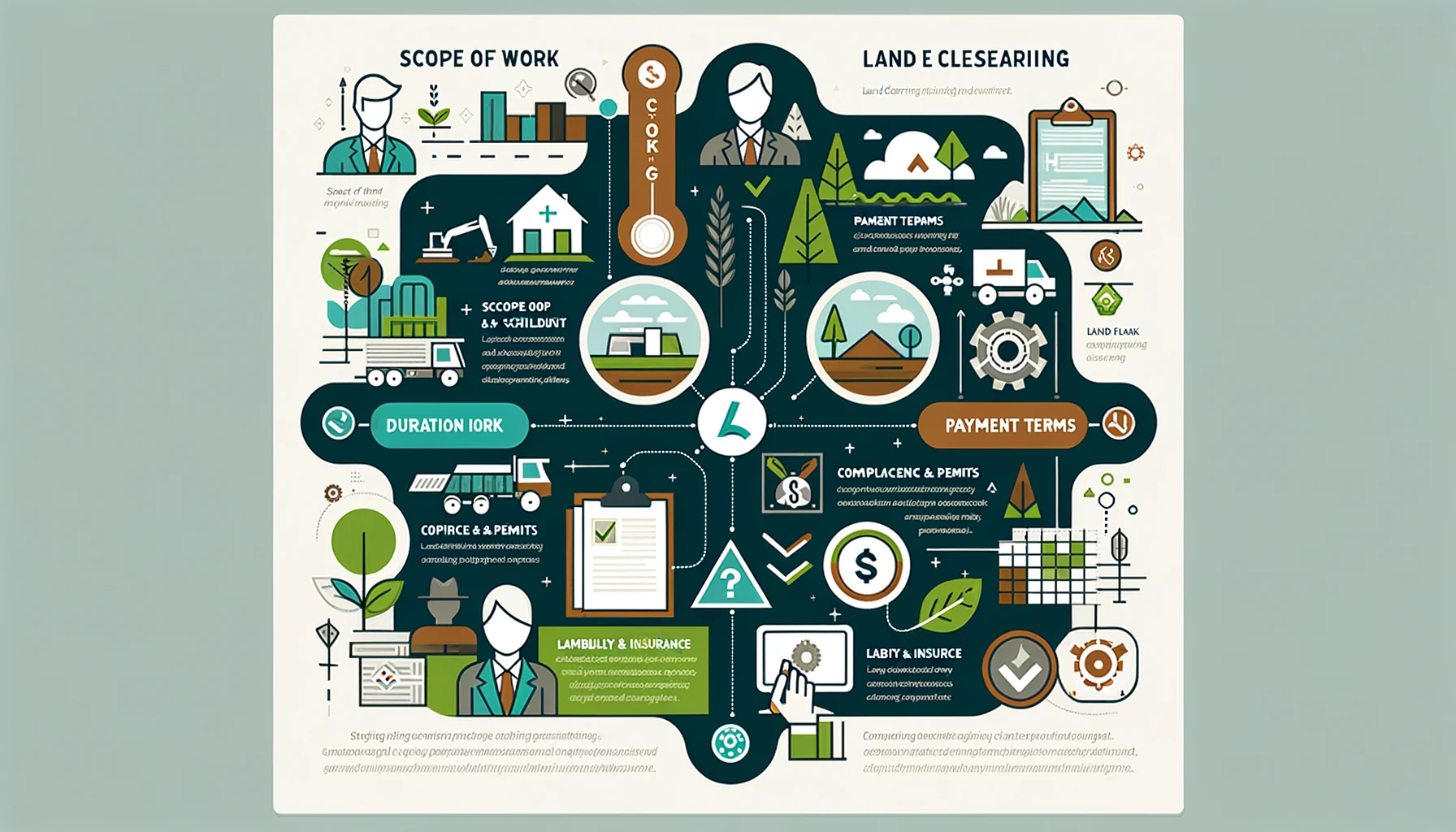The Ultimate Guide to Land Clearing Contracts: Templates, Tips, and Legal Insights
Land clearing projects are critical for various purposes, ranging from agricultural development to commercial real estate construction. A comprehensive land clearing contract is essential to ensure clarity, compliance, and smooth execution of these projects. This guide offers in-depth insights into creating a land clearing contract template, alongside tips and legal advice to navigate these agreements effectively. With a focus on ensuring high credibility, we include links to reputable sources for further reading.

Understanding Land Clearing Contracts
Land clearing contracts delineate the terms, conditions, and scope of work for clearing land parcels. These contracts are pivotal in outlining the responsibilities of both the contractor and the client, encompassing services like tree removal, stump grinding, brush removal, and soil leveling.
Key Components of a Land Clearing Contract
Scope of Work: Clearly defines the land clearing tasks to be undertaken.
Duration and Schedule: Outlines the project timeline and completion dates.
Payment Terms: Details the payment schedule, amounts, and conditions.
Compliance and Permits: Addresses the need for environmental and local permits.
Liability and Insurance: Specifies insurance requirements and liability clauses.
For an authoritative overview of contract law principles, consider visiting the Cornell Law School's Legal Information Institute.
Creating a Land Clearing Contract Template
A well-structured template streamlines the process of drafting contracts for different projects. Here’s how to create a versatile land clearing contract template:
Introduction Section: Start with the basics—parties' names, addresses, and project location.
Detailed Scope of Work: Use bullet points or numbered lists for clarity.
Schedule and Deadlines: Include a project calendar and milestones.
Payment Details: Outline the total cost, installment payments, and acceptable payment methods.
Permit and Regulatory Compliance: Highlight the responsibility for obtaining necessary permits and adhering to regulations. The Environmental Protection Agency (EPA) offers guidance on environmental compliance that might be relevant.
Insurance and Liability: Clarify insurance requirements and risk allocation.
Dispute Resolution: Propose mechanisms for addressing disagreements.
Signatures: Ensure space for all parties' signatures and dates.
The National Association of State Procurement Officials (NASPO) provides templates and best practices that can be adapted for land clearing contracts.
Tips for Negotiating Land Clearing Contracts
Effective negotiation ensures that both parties are satisfied with the contract terms. Here are tips to consider:
Research Market Rates: Understanding the going rates for land clearing services in your area can help in negotiating fair prices. Resources like the Bureau of Labor Statistics can provide relevant economic data.
Clarify Scope Creep: Define what constitutes additional work outside the contract's scope to avoid unexpected costs.
Discuss Payment Terms: Agree on a payment schedule that aligns with project milestones.

Create & Review Your Contracts 10x Quality and Ease
Lawyer-level AI handles all your contract needs, with real lawyers providing safeguarding support

Legal Considerations and Compliance
Legal compliance is non-negotiable in land clearing projects. Here are legal aspects to consider:
Environmental Laws: Familiarize yourself with federal, state, and local environmental regulations. The EPA's website is a valuable resource for understanding these laws.
Zoning and Land Use: Check zoning laws to ensure the project's compliance. Local government websites often provide this information.
Contract Enforceability: Ensure that the contract is legally binding and enforceable in your jurisdiction. Consultation with a legal professional specializing in real estate or environmental law is advisable.
For deeper legal insights, the American Bar Association offers resources on contract law and real estate transactions.
Conclusion
A well-crafted land clearing contract is pivotal for the success and legal compliance of your project. By incorporating the elements outlined in this guide and leveraging the linked resources, you can ensure that your contract is comprehensive, clear, and legally sound. Always consider consulting with a legal expert to tailor the contract to your specific needs and local regulations.
Further exploration into contract templates and land clearing regulations is encouraged through reputable educational and government resources. Engaging with these materials will enhance your understanding and ensure your projects proceed smoothly and legally.

